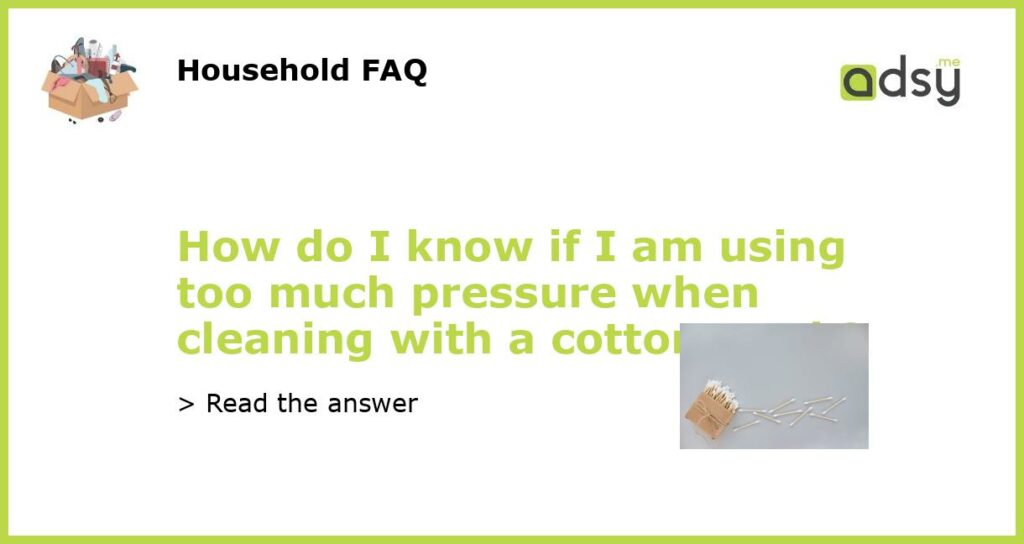Understanding the Potential Risks of Using Cotton Swabs
Cotton swabs, also known as Q-tips, are commonly used for cleaning small and hard-to-reach places, such as the ear canal, computer keyboard, and other electronic devices. However, using cotton swabs may pose a risk of damaging the delicate skin or tissues, causing infections, or even harming the eardrum. Therefore, it is essential to know how to use cotton swabs safely and avoid applying too much pressure or inserting them too deeply.
The Symptoms of Using Too Much Pressure with Cotton Swabs
Using too much pressure when cleaning with cotton swabs may cause some noticeable symptoms, such as pain, bleeding, swelling, or discharge. In the ear canal, using cotton swabs too aggressively may push the earwax further inside, causing an impaction or blockage that can affect hearing or require medical intervention. Similarly, when cleaning delicate electronics, using cotton swabs with force may scratch or damage the surfaces, leading to malfunctions or replacement costs.
Tips for Safely Cleaning with Cotton Swabs
To reduce the risks of applying too much pressure when cleaning with cotton swabs, try the following tips:
- Use cotton swabs only for the surfaces that are visible and accessible, such as the outer ear, keyboards, or screens.
- Avoid inserting the cotton swabs too deeply inside the ear canal, and do not use them if you have any ear pain, itching, or discharge.
- Moisten the cotton swabs with water, disinfectant, or alcohol before using them to avoid friction or irritation on the skin.
- Use gentle, circular motions when cleaning, rather than pushing or scrubbing too hard.
Alternatives to Using Cotton Swabs for Cleaning
If you are concerned about the risks associated with using cotton swabs, there are several alternatives to consider:
- Ear syringing or irrigation, which involves flushing the earwax out with water or saline solution, and is usually done by a medical professional.
- Ear drops or oils, which can be applied on the ear canal to soften the earwax and help it come out naturally.
- Air puffers or soft brushes, which can be used to remove dust or debris from the keyboards or screens without scratching them.
- Microfiber cloths, which are professionally designed to remove fingerprints, smudges, and other residues from electronics or glasses without the need for chemicals or other tools.
When to Seek Medical Help for Ear Cleaning
If you experience any of the following symptoms when cleaning your ear with cotton swabs, stop immediately and seek medical attention:
- Persistent pain, itching, or tenderness inside the ear.
- Drainage or bleeding from the ear canal.
- Ringing or buzzing sounds in the ear.
- Temporary or permanent hearing loss.
- Dizziness, vertigo, or loss of balance.






